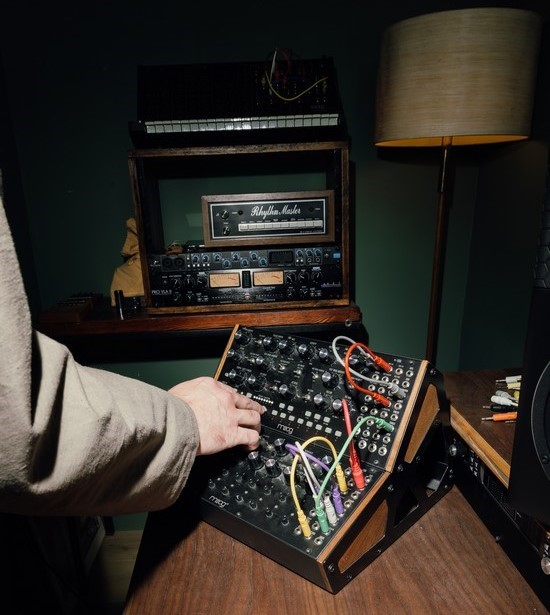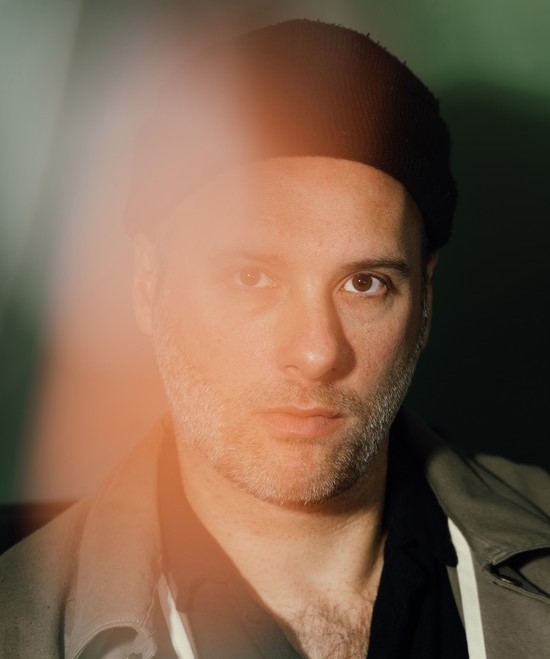David James Rosen’s work has been streamed on YouTube hundreds of millions of
times. He has played a crucial role in some of pop culture’s biggest recent
moments. But few people outside the space where the entertainment and marketing
industries overlap know his name.
اضافة اعلان
As a
composer, Rosen is at the forefront of the trailerization movement: He is in demand
for his ability to rework existing songs to maximize their impact in trailers
for films and TV shows.
He
married vocals and motifs from Kate Bush’s “Running Up That Hill” to a
thunderous version of the “Stranger Things” theme in the lead-up to the second
volume of the show’s fourth season. He intertwined Nigerian singer Tems’ cover
of “No Woman No Cry” with Kendrick Lamar’s “Alright” in the teaser for “Black
Panther: Wakanda Forever”, symbolizing the meeting of the franchise’s future
and its legacy. He put a sinister singe on Taylor Swift’s “It’s Nice to Have a
Friend” for the diabolical doll thriller “M3GAN”. He added cosmic drama to
Elton John’s classic rock staple “Goodbye Yellow Brick Road” for the upcoming
“Ant-Man and the Wasp: Quantumania”.
 David James Rosen with two of his semi-modular analog synths.
David James Rosen with two of his semi-modular analog synths.
As potential
viewers are inundated with an ever-growing number of options, studios have
limited chances to build anticipation for their projects. At the same time,
technological advances have made it easier than ever for products to stand out.
“People want their film to have its own identity,” Rosen said in an interview
at a Los Angeles coffee shop. “The genie’s out of the bottle as far as the
limitless ability to customize something for your film. Clients, studios,
agencies, whatever, they all know that and like to take advantage of it.”
Rosen
spent his 20s playing guitar in the New Jersey band the Parlor Mob. After
moving to LA in 2014, he got a job as the in-house composer at a trailer house
— the specialized production companies behind these promos. Three years later,
he co-founded Totem, a music library that creates custom tracks for trailers.
Much of Rosen’s output is original compositions, but the ones that get the most
attention are his overhauls.
“Almost
never does a song just drop into a trailer and work,” he said. “Maybe it needs
to feel more epic or more emotional, or maybe it needs to feel subtler with
things pulled away.”
Trailerization
is a relatively new term and the distinctions within it are malleable. There
are reimaginations, which are usually instrumental covers by composers. There
are overlays, where elements are added to a song in varying degrees. Then there
are remixes, where the source material is distinctly altered, often to shift
the context.
Some
distinguish between remixes and overlays by what the composer has to play with.
If there is a full set of stems — the separated digital parts that comprise a
song — it’s a remix. If stems are not available, it is an overlay.
Occasionally
composers will be asked to create “invisible overlays,” where they make
adjustments that are imperceptible to most listeners but nudge a song toward a
more wide-screen sound.
The
trailerization process is now so common that even when a trailer uses the
film’s original score, it too will be adjusted. “Trailers are a mini version of
the movie,” said Cato, the one-named composer whose credits include performing
a system update on Vangelis for the “Blade Runner 2049” trailer and giving Guns
N’ Roses an anguished-turned-pulverizing remix for Jason Momoa’s Netflix revenge
film “Sweet Girl.”
“You
have to suck people into the theater and tell a story in two and a half minutes,”
Cato added. “That is so intense and builds so quickly that most music written
for the actual movie will be way too long and drawn out.”
Many
point to the trailer for “The Social Network,” from 2010 — which
featured a Belgian women’s choir singing Radiohead’s “Creep” — as the origin of
what became the trailerization trend. Its success incited a deluge of trailers
using slow and sad covers of well-known songs, usually featuring female
vocalists. Recent examples include Liza Anne’s version of “Dreams” by the
Cranberries for “After sun” and Bellsaint’s interpretation of R.E.M.’s “Losing
My Religion” for the second season of the “Chucky” TV series.
Sanaz Lavaedian,
the senior vice president of music for the trailer house Mocean, said that when
she entered the industry in 2011, there was still a lot of resistance from
artists who didn’t want their music used for commercial purposes. Covers
provided a workaround. Now, as more musicians are struggling to make a living,
they’re often more open to trailers not just using their music but modifying
it.
Composer
Bryce Miller’s big breakthrough came in 2019 with the “Godzilla: King of the
Monsters” trailer, which featured his custom orchestral rendition of “Somewhere
Over the Rainbow” atop images of kaiju carnage. His subsequent credits include
a modernization of Blondie’s “Heart of Glass” for “House of Gucci”, an
orchestral blend of the Rolling Stones’ “Paint It Black” and the “Addams Family
Theme” for “Wednesday” and a haunting overlay for Nirvana’s “Something in the
Way” in “The Batman” trailer.
“As
soon as I can get rid of dated-sounding guitars and drums, I can build a more
contemporary production that is pulling from more pop music sounds,” Miller
said. “Older recordings sonically are a little thin and lack the heft that so
many contemporary songs have.”
Unique
remixes began appearing in trailers going back to the mid-2010s, but it wasn’t
until the one for Jordan Peele’s 2019 film “Us” that studios and audiences
began to really take notice. In the fresh interpretation, with its piercing
strings and moody atmospherics, a celebratory weed rap by the Oakland duo Luniz
became deeply unsettling.
“Every
once in a while we get one of those game-changer trailers,” Lavaedian said. The
“Us” trailer “is taking a song and deconstructing it down to its bones and then
constructing it again to do what that film needed it to do. It was kind of
groundbreaking.”
Mark Woolen,
the founder of the trailer house Mark Woolen & Associates,
specializes in award-season films and was responsible for that transformative
“Social Network” trailer. New York magazine once called him “the uncontested
auteur of the trailer era.”
In a
phone interview, Woolen noted that in contemporary trailers, omniscient
narration has largely disappeared (that means no more hackneyed “In a world …”
setups) and there’s less dialogue from the film. Trailers “can be more
impressionistic and elliptical in their storytelling,” he said. “It’s more
about creating a feeling in a lot of the work.”

Deciding
which song a trailer uses and how it is employed can involve studio marketing
executives, the filmmakers, the team at the trailer house and the composer. A
trailer’s creation can take years and is often covered by restrictive
nondisclosure agreements, preventing the people behind it from discussing the
details of making it, even after it has been released.
Because
the material is so protected, the musicians rarely see the images that will be
included in the trailer. Instead they have to rely on a music supervisor or
creative director at a trailer house to guide them through inception and
multiple rounds of revisions. “We’re literally dealing with billions of dollars
in unreleased assets,” Lavaedian said of the footage from the films. “There’s
no way we can send that to a composer.”
Unless
you know where to look on the internet, the pieces made by trailer
composers are largely uncredited, and sometimes contractually so.
Trailerizations are created “to live exclusively in the trailer,” Rosen said.
“They serve as a piece of marketing.”
But
that may be changing.
When
the agency Trailer Park approached Miller about doing a trailerization for the
first volume of the fourth season of “Stranger Things,” he was told the general
plot and tone of the episodes. He’d long wanted to do something with Journey’s
“Separate Ways (Worlds Apart)” and it turned out the song was on the agency’s
shortlist as well.
After
spending months on his ominous remix, it made it to the final stages of the
approval process where the original musicians had to sign off. Steve Perry, the
song’s singer, loved it and came to Miller’s studio to help construct an
extended remix. Then he got Netflix to release both versions on the official
soundtrack, with Miller’s name attached.
With
decades of material to work with, Rosen hopes the trend continues. “There’s
more opportunity for creativity from me and other people,” he said. “I view it
as a new life for a lot of these artists’ songs.”
Read more Lifestyle
Jordan News







